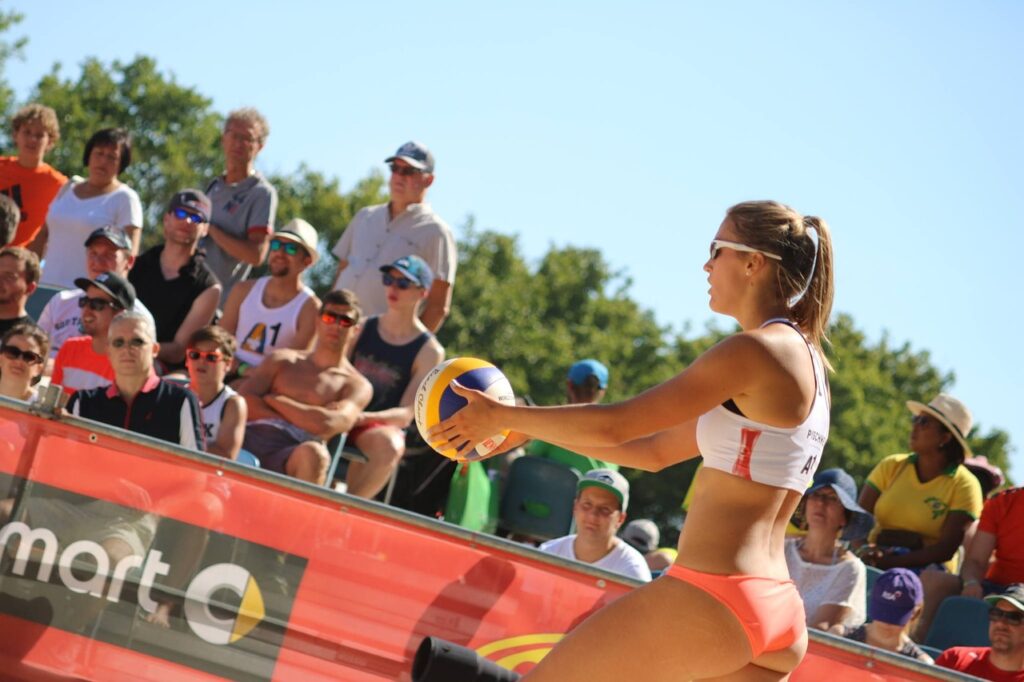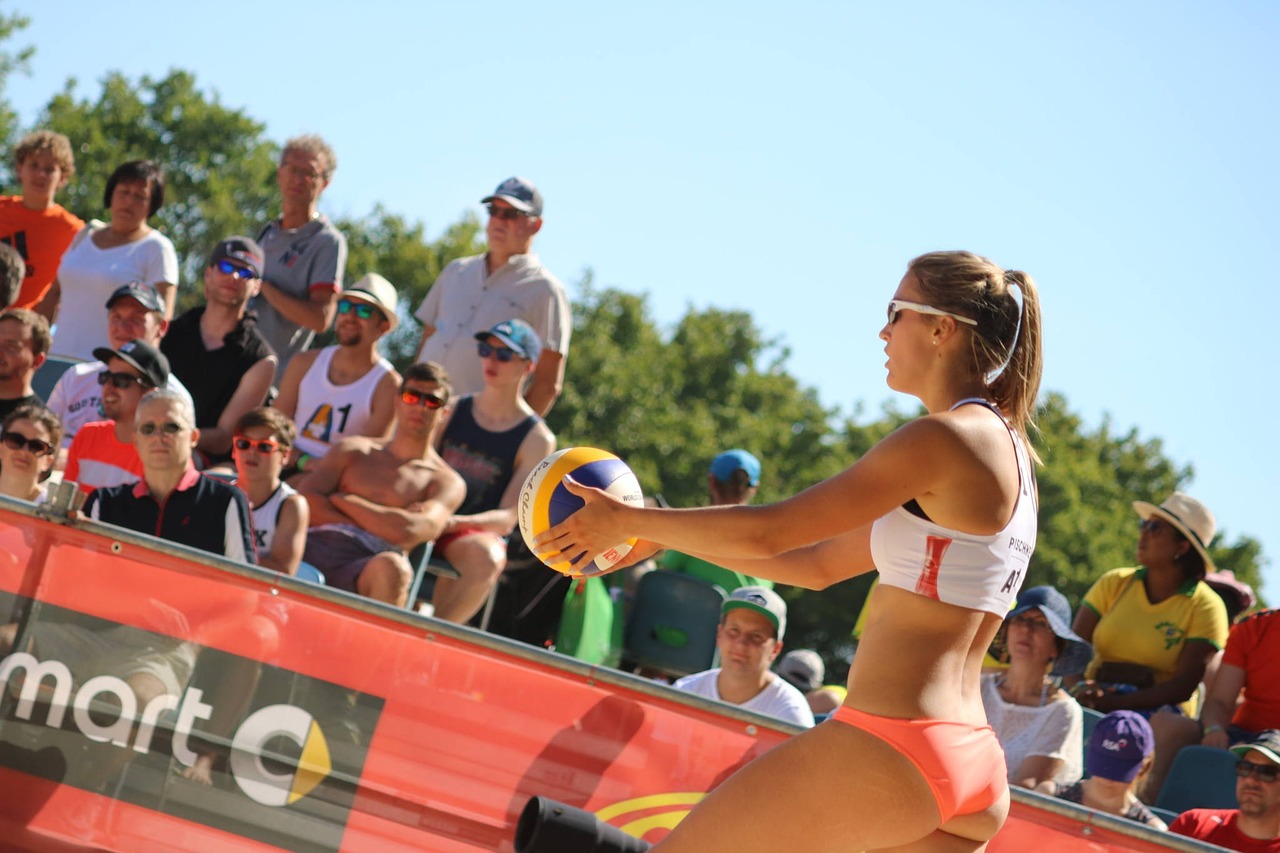Volleyball is a dynamic sport that relies on teamwork, strategy, and adherence to rules. One common question among players, especially newcomers, is can you block the serve in volleyball. The answer, based on official rules, is no—you cannot block a serve in volleyball.
Imagine this scenario: It’s the final set of a high-stakes match, and your team is down by one point. The opposing team’s server steps up, ready to unleash a powerful jump serve. Your middle blocker, eager to make a play, leaps to block it—only to hear the referee’s whistle. Fault. Point to the other team. Game over. This story, while fictional, highlights a crucial rule: blocking a serve is illegal, and understanding this can save your team from costly mistakes.
Let’s explore why this rule exists, its historical evolution, the consequences of violating it, and how to defend against serves effectively. It’s designed for volleyball lovers looking to deepen their understanding and improve their game, with a friendly, conversational tone to make the information accessible and engaging.
Can You Block the Serve in Volleyball?

Research suggests that blocking a serve is explicitly prohibited in volleyball. According to the FIVB (Fédération Internationale de Volleyball) Rule 14.5, “To block an opponent’s service is forbidden.” This rule, enforced since 2012, means players cannot use their hands or arms to stop or redirect the ball during a serve, as it would constitute a fault.
A block is defined as a defensive play at the net, typically involving jumping and using the hands or arms to stop an attack, but this is not allowed on a serve to maintain the integrity of the rally’s start.
This rule applies universally across indoor and beach volleyball, ensuring consistency. For example, sources like EcoSports and Volley-Pedia confirm that blocking a serve is illegal, with clear references to FIVB guidelines.
However, in casual or recreational games, some players might not enforce this rule, leading to confusion. It’s important to clarify that official matches, especially at competitive levels, strictly adhere to this regulation.
Historical Evolution of the Rule
The evidence leans toward a significant rule change in 2012. Before October 23, 2012, blocking the serve was permitted, as noted in historical discussions on platforms like Quora.
However, the FIVB revised this rule to enhance fair play and strategic balance. Sources like The Sports Ground detail that the change was motivated by several factors:
- Fairplay and Inclusivity: Blocking a serve could favor taller or more skilled players, making it harder for novices or less athletic players to serve effectively. This aligns with volleyball’s vision of being accessible to all, as highlighted in Better at Volleyball.
- Strategic Impact: Allowing blocks would force servers to hit higher, reducing the serve’s offensive potential and turning aggressive serves into easy lobs, reversing the serving team’s advantage, especially at higher levels.
- Safety Concerns: Blocking serves could lead to over-aggressive play, increasing injury risks, such as players getting hit while attempting to block. This mirrors rule changes in other sports, like football, to protect players.
This historical context explains why the rule was changed and underscores its importance in modern volleyball.
Consequences of Blocking a Serve
Blocking a serve has immediate and significant consequences. If a player attempts to block a serve, it results in a fault, and the opposing team is awarded a point.
This is clearly stated in sources like ImproveYourVolley, which notes that such actions are against basic volleyball rules. The impact on the game can be profound:
- Immediate Fault: The opposing team gains a point, which can be particularly damaging in tight matches where every point counts.
- Loss of Momentum: A fault can disrupt your team’s rhythm, potentially leading to more errors and affecting morale.
- Strategic Disadvantage: Repeated faults for blocking serves may force your team to play more cautiously, limiting offensive options and giving the opponent an edge.
For example, in a high-level match, a single fault could be the difference between winning and losing, as seen in competitive analyses on Volleyball World. Understanding these consequences is vital for players and coaches to avoid such mistakes.
Strategies for Defending Against Serves
Since blocking a serve is not an option, teams must rely on other defensive strategies, primarily focusing on serve reception. This involves passing and digging to control the ball and set up the offense. Here are some key techniques:
- Serve Reception: The first line of defense is receiving the serve effectively, ensuring a clean pass to the setter. This sets up the team’s attack and keeps the rally alive.
- Digging: For aggressive serves, a dig—a low, controlled pass—can keep the ball in play, allowing the team to recover and continue the rally.
- Communication: Clear communication among players ensures everyone knows who will receive the serve and where to position themselves, reducing confusion and errors.
To enhance these skills, consider the following tips, optimized for volleyball lovers:
- Stay Alert: Be ready for any type of serve—float, jump, or topspin—as unpredictability is key.
- Positioning Matters: Position yourself slightly behind the ball’s expected landing spot to give yourself time to react and adjust.
- Use Your Platform: For difficult serves, use your forearms (platform) to control the ball, rather than your hands, for better accuracy.
- Target Practice: Aim your pass to a consistent target area, usually the setter’s position, to facilitate the next play.
- Practice Under Pressure: Simulate game-like conditions during practice to improve reaction time and accuracy, as suggested by Coaching Volleyball.
These strategies ensure your team can defend against serves effectively without resorting to illegal blocks.
Statistical Insights on Serve Reception
Serve reception is statistically proven to be a critical factor in volleyball success. Here are two relevant statistics from credible sources, enhancing our understanding:
- Serve Receive Percentage: At the elite level, a good serve receive percentage is around 90% or higher, meaning top players successfully receive 9 out of 10 serves. For teams, aiming for an average passing score of 2.0 or better on a 0 to 3 scale (where 3 is a perfect pass) is crucial for running an effective offense. This is supported by Coaching Volleyball, which notes that squads achieving this average usually run effective offenses, with the best passers averaging 2.3-2.4.
- Impact on Match Outcomes: A study published in Frontiers in Psychology found that serve reception efficacy significantly predicts team success, with 70% of receptions at the highest levels of women’s volleyball resulting in passes that allow the team to stay “in system” (i.e., set up for an effective attack). This underscores the importance of strong serve reception for winning matches, as detailed in Predicting Volleyball Serve-Reception.
These statistics highlight why mastering serve reception is far more valuable than attempting to block serves, aligning with the rule’s intent to maintain competitive balance.
Frequently Asked Questions (FAQ)
To address common queries, here’s an FAQ section for volleyball enthusiasts:
What happens if you accidentally block a serve?
Even accidental blocks are considered faults, and the opposing team gets the point. It’s crucial to avoid any contact with the ball above the net during a serve to prevent this.
Can you jump to receive a serve?
Yes, you can jump to receive a serve, but you must make contact with the ball on your side of the net. Jumping to block the serve, however, is illegal and results in a fault.
Are there any exceptions to the no-blocking rule?
No, the rule is universal across all levels of volleyball, from recreational to professional play, ensuring consistency in official matches.
Can you touch the net while receiving a serve?
No, touching the net at any time during play, including during serve reception, is considered a fault, as per standard volleyball rules.
What’s the difference between a block and a dig?
A block is an attempt to stop the ball at the net, typically during an attack, while a dig is a defensive play to control a hard-hit ball (like a spike) after it crosses the net, used for serve reception or defense.
Conclusion
In conclusion, blocking a serve in volleyball is not just illegal—it’s a rule designed to ensure fair play, safety, and strategic balance since its change in 2012.
Instead of focusing on blocks, volleyball lovers should prioritize serve reception, backed by statistics showing its critical role in match outcomes. Whether you’re a player, coach, or fan, understanding these rules can enhance your game and prevent costly mistakes.
Want to improve your serve reception skills? Check out our Top 5 Tips above!
